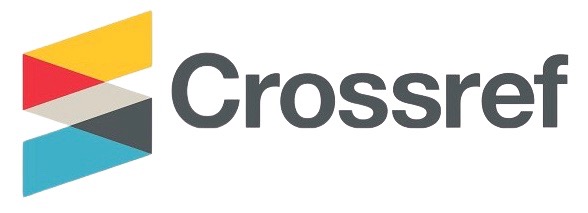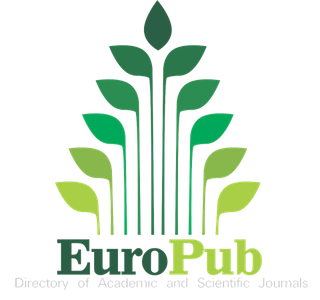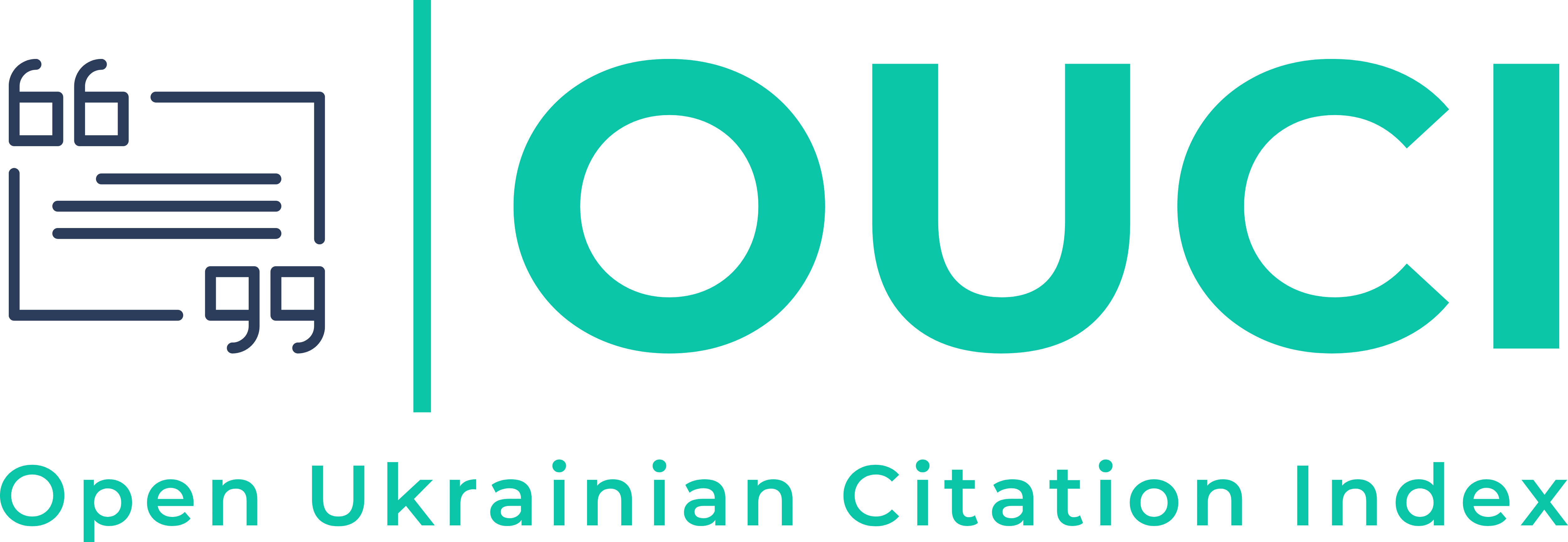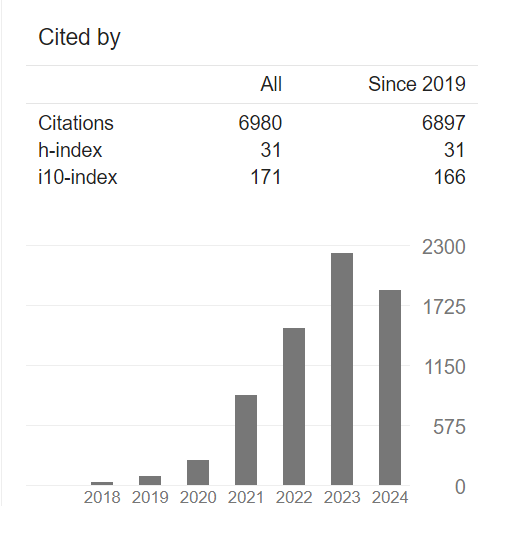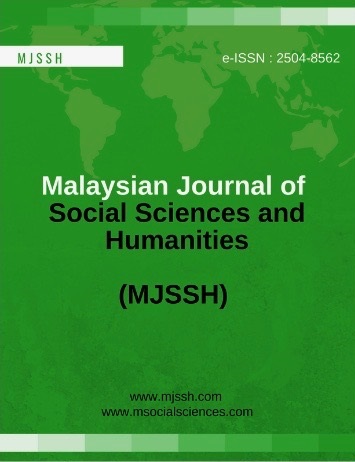Kesahan dan Kebolehpercayaan Instrumen Sokongan Organisasi, Kepuasan Kerja, Ganjaran dan Komitmen Guru
Abstract
Komitmen guru prasekolah memainkan peranan penting dalam meningkatkan kualiti pengajaran, memperbaiki hasil pembelajaran kanak-kanak dan seterusnya menjamin kejayaan Pendidikan awal. Kajian ini bertujuan untuk menentukan kesahan dan kebolehpercayaan instrumen soal selidik Sokongan Organisasi Yang Diterima, Kepuasan Kerja, Ganjaran dan Komitmen Dalam Kalangan Guru-guru Prasekolah. Instrumen soal selidik telah dinilai dan disahkan dari segi kesahan muka dan kesahan kandungan oleh dua orang pakar dalam bidang kajian. Seramai 141 orang guru prasekolah di daerah Kota Marudu telah dipilih sebagai responden dalam kajian rintis yang dijalankan. Dapatan kajian menunjukkan kesahan dan kebolehpercayaan yang tinggi, dengan nilai KMO (Kaiser-Meyer-Olkin) melebihi 0.6 dan nilai alfa Cronbach melebihi 0.7 mengesahkan konsistensi dalaman dan kesesuaian untuk analisis faktor. Analisis faktor penerokaan menyokong kerangka teori yang dibangunkan dengan mengekalkan item-item yang mempunyai nilai pemuatan faktor yang tinggi bagi memastikan pengukuran konstruk yang tepat.
Downloads
References
Armeli, S., Eisenberger, R., Fasolo, P., & Lynch, P. (1998). Perceived organizational support and police performance: the moderating influence of socioemotional needs. Journal of applied psychology, 83(2), 288. https://doi.org/10.1037/0021-9010.83.2.288
Arteaga, I., Humpage, S., Reynolds, A.J., & Temple, J.A. (2014). One year of preschool or two: Is it important for adult outcome? Economic of Education Review, 40, 221-237.
Azizi, A. (2010). Pentaksiran pendidikan. Dewan Bahasa dan Pustaka.
Cohen, L., Manion, L., & Morrison, K. (2017). Research methods in education (8th ed.). Routledge. https://doi.org/10.4324/9781315456539
Comrey, A. L., & Lee, H. B. (1992). A first course in factor analysis (2nd ed.). Lawrence Erlbaum Associates.
Creswell, J. W. (2008). Research Design: Qualitative, Quantitative and Mixed Methods Approaches. 3rd ed. Thousand Oaks, CA: Sage.
Creswell, J.W. (2012). Educational Research: Planning, Conducting, and Evaluating Quantitative and Qualitative Research. 4th Edition. Pearson Education, Inc., 501 Boylston Street, Boston, MA.
Creswell, J. W. (2014). Research design: Qualitative, quantitative, and mixed methods approaches (4th ed.). SAGE Publications.
David Lim, Nor Azizah Salleh, Saat Md Yasin, Mohd Kidin Shahran, Alias Mohd Yatim & Abdul Razak Habib. (2010). HBEF2503: Kaedah Penyelidikan dalam Pendidikan. Open University of Malaysia, Kuala Lumpu
Dorgham, D. A. (2012). Developing a Likert scale instrument for measuring attitudes towards e-learning. International Journal of Educational Technology, 3(1), 55–67.
Eisenberger, R., Huntington, R., Hutchison, S., & Sowa, D. (1986). Perceived organizational support. Journal of Applied psychology, 71(3), 500. https://psycnet.apa.org/1986-31507-001
Eisenberger, R., Fasolo, P., & Davis-LaMastro, V. (1990). Perceived organizational support and employee diligence, commitment, and innovation. Journal of Applied Psychology, 75(1), 51–59. doi:10.1037/0021-9010.75.1.51
Emison, A., Ompok, C. C., Idang, J., & Mosin, M. (2023). Keberkesanan Modul Pendekatan Projek Menggunakan Ecocampus UMS Untuk Pencapaian Matematik Awal Kanak-kanak Tadika. Malaysian Journal of Social Sciences and Humanities (MJSSH), 8(11), e002583-e002583.
Gay, L. R., Mills, G. E., & Airasian, P. W. (2012). Educational research: Competencies for analysis and applications (10th ed.). Pearson Education.
George, D., & Mallery, P. (2003). SPSS for Windows Step by Step: A Simple Guide and Reference. 11.0 Update (4th ed.). Boston: Allyn & Bacon.
Hair, J. F., Hult, G. T. M., Ringle, C. M., & Sarstedt, M. (2014). A primer on partial least squares structural equation modeling (PLS-SEM). Sage Publications.
Hair, J. F., Black, W. C., & Babin, B. J. (2007). Multivariate Data Analysis. McGraw Hill Publishing, New York.
Helena, S. F., & Gideon Y. S. (2023). Monetary rewards and work commitment among teachers in rural public secondary schools in rombo district, Tanzania. Journal of Management and Science, 13(2) 32-37. https://doi.org/10.26524/jms.13.18
Hertzog, M. A. (2008). Considerations in determining sample size for pilot studies. Research in Nursing & Health, 31(2), 180–191. https://doi.org/10.1002/nur.20247
Hulland, J., Baumgartner, H., & Smith, K. M. (2017). Marketing survey research best practices: evidence and recommendations from a review of JAMS articles. Journal of the Academy of Marketing Science, 1-17. doi: 10.1007/s11747-017-0532-y
Ismail, N., Ramli, N. H., & Kee, C. P. (2015). Job stress and coping mechanisms among preschool teachers in Malaysia. International Journal of Early Childhood Education and Care, 4, 45–57.
Jeon, H.-J., Kwon, K.-A., Walsh, B. A., Burnham, M. M., & Choi, Y.-J. (2018). Relations of early childhood education teachers’ depressive symptoms, job-related stress, and professional motivation to beliefs about children and teaching practices. Early Education and Development, 30(1), 131–144. https://doi.org/10.1080/10409289.2017.1341806
Kamaruddin, N. (2020). Faktor-faktor yang mempengaruhi kepuasan kerja guru tadika swasta di Sabah. Jurnal Penyelidikan Pendidikan, 5(1), 55–68.
Lay, D. C., Lay, S. R., & McDonald, J. J. (2016). Linear algebra and its applications (5th ed.). Pearson Education.
Lester, P. E. (1982). Teacher job satisfaction questionnaire. Brookville, NY: Long Island University.
Liu, T., Yang, L., Ng, J., & Nyland, B. (2022). Reference effect of preschool teachers’ salary and its influence on preschools’ service quality: an empirical study in China. International Journal of Elementary Education, 11(1), 1. https://doi.org/10.11648/j.ijeedu.20221101.11
Locke, E. A. (1976). The nature and causes of job satisfaction. In M. D. Dunnette (Ed.), Handbook of industrial and organizational psychology (pp. 1297–1349). Rand McNally.
Lynch, P. D., Eisenberger, R., & Armeli, S. (1999). Perceived organizational support: Inferior versus superior performance by wary employees. Journal of applied psychology, 84(4), 467-483. https://doi.org/10.1037/0021-9010.84.4.467
Mohd. Majid, K. (1990). Kaedah Penyelidikan Pendidikan. Kuala Lumpur: Dewan Bahasa dan Pustaka.
Mohd. Majid, K. (1998). Kaedah Penyelidikan Pendidikan. Kuala Lumpur: Dewan Bahasa dan Pustaka.
Mohd. Majid, K. (2005). Kaedah penyelidikan pendidikan. Dewan Bahasa dan Pustaka.
Mohd. Najib, A. G. (2003). Reka bentuk tinjauan soal selidik pendidikan. Skudai: Universiti Teknologi Malaysia.
Muijs, D. (2011). Doing quantitative research in education with SPSS (2nd ed.). SAGE Publications.
Noraini Idris. (2010). Penyelidikan dalam Pendidikan. Mc Graw Hill, Kuala Lumpur.
Noraidi, N., Shin, C., Ompok, C., Idang, J., & Sukor, N. S. (2024). Keberkesanan Pembelajaran Berasaskan Alam Semula Jadi Terhadap Pencapaian Matematik Awal Kanak-Kanak Prasekolah. Malaysian Journal of Social Sciences and Humanities (MJSSH), 9(10), e003034-e003034.
Norsuhaily, B., Mariani, M., & Mohd Sahandri, G. A. (2020). Tekanan kerja dan kesejahteraan psikologi dalam kalangan guru prasekolah swasta. Jurnal Pendidikan Awal Kanak-kanak Kebangsaan, 9(1), 17–30.
Noor, N. M., & Leong, C. K. (2021). Kepuasan kerja dalam kalangan guru prasekolah: Tinjauan dari aspek organisasi dan individu. Jurnal Pendidikan Malaysia, 46(2), 23–35.
O’Driscoll, M. P., & Randall, D. M. (1999). Perceived organizational support, satisfaction with rewards, and employee job involvement and organizational commitment. Applied Psychology: An International Review, 48(2), 197–209. https://doi.org/10.1111/j.1464-0597.1999.tb00058.x
Organisation for Economic and Co-operative Development (OECD). (2012). Starting strong III: A quality toolbox for early childhood education and care. Organisation for Economic Co-operation and Development. Retrieved 22 August 2014, from http://www.oecd.org/edu/school/ 49325825.pdf
Ompok, C. C., Idang, J., Mosin, M., Emison, A., & Payne, P. K. (2021). Penggunaan Buku Nombor dalam Pengajaran Awal Matematik Kanak-Kanak Prasekolah. Malaysian Journal of Social Sciences and Humanities (MJSSH), 6(11), 190-197.
Pianta, R. C., La Paro, K. M., & Hamre, B. K. (2005). The relation of preschool classroom environment to teacher-child interactions and child outcomes. Applied Developmental Psychology, 26(3), 253–272. https://doi.org/10.1016/j.appdev.2005.04.005
Pallant, J. (2016). SPSS survival manual: A step-by-step guide to data analysis using IBM SPSS (6th ed.). McGraw-Hill Education.
Polit, D. F., Beck, C. T., & Hungler, B. P. (2001). Essentials of nursing research: methods, appraisal, and utilization (5th ed.). Philadelphia: Lippincott Williams and Wilkins.
Rowley, J. (2014). Designing and using research questionnaires. Management Research Review, 37(3), 308-330.
Sabitha, M. (2005). Kaedah penyelidikan sains sosial. Prentice Hall.
Schaack, D. D., Donovan, C. V., Adejumo, T., & Ortega, M. (2021). To Stay or to Leave: Factors Shaping Early Childhood Teachers’ Turnover and Retention Decisions. Journal of Research in Childhood Education, 36(2), 327–345. https://doi.org/10.1080/02568543.2021.1955779
Sekaran, U., & Bougie, R. (2010). Research methods for business: A skill-building approach (5th ed.). Haddington: John Wiley & Sons.
Sekaran, U. (2003). Research methods for business: A skill building approach (4th ed.). United State of America: John Willey and Sons, Inc.
Shin, C., & Idang, J. (2025). I-Shape by Shape: Real-World STEM Learning in Malaysia. Childhood Education, 101(3), 50–53. https://doi.org/10.1080/00094056.2025.2486917
Shin, C., Ompok, C. C., & Bacotang, J. (2019). Kesan kaedah mengajar terhadap pencapaian awal matematik dalam kalangan kanak-kanak prasekolah: The effects of teaching methods in the early mathematics achievement among preschool children. Jurnal Pendidikan Awal Kanak-Kanak Kebangsaan, 8, 8-16.
Shore, L. M., & Tetrick, L. E. (1991). A construct validity study of the survey of perceived organizational support. Journal of applied psychology, 76(5), 637-643. https://doi.org/10.1037/0021-9010.76.5.637
Shore, L. M., & Wayne, S. J. (1993). Commitment and employee behavior: Comparison of affective commitment and continuance commitment with perceived organizational support. Journal of applied psychology, 78(5), 774-780. https://doi.org/10.1037/0021-9010.78.5.774
Sidek, M. N. (2002). Reka Bentuk Penyelidikan: Falsafah, Teori dan Praktis. Serdang: Universiti Putra Malaysia.
Teijlingen, E. V., & Hundley, V. (2002). The importance of pilot studies. Nursing Standard, 16(40), 33-36. doi: http://hdl.handle.net/2164/157
Thien, L. M., Nordin, A. B., Keeves, J. P., & Darmawan, I. G. N. (2014). System, school, and instructional climate: A study of teacher commitment in Malaysia. The Asia-Pacific Education Researcher, 23(3), 421–433. https://doi.org/10.1007/s40299-013-0112-0
Qinghua, L., Shin, C., & Ompok, C. C. (2022a). The Influence of Parenting Styles on Child-Parent Relationship Among Chinese and Bumiputera in Sabah. Malaysian Journal of Social Sciences and Humanities (MJSSH), 7(9), e001762-e001762.
Qinghua, L., Shin, C., & Ompok, C. C. (2022b). The Influence of Social Support on Child-Parent Relationship Among Chinese Mothers of Preschoolers in Penampang, Sabah. Malaysian Journal of Social Sciences and Humanities (MJSSH), 7(11), e001880-e001880.








